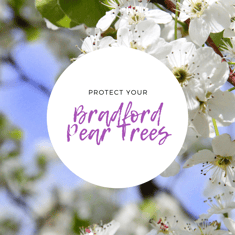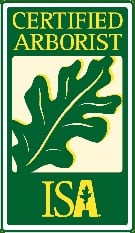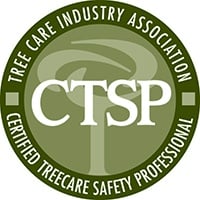Recently we’ve noticed Bradford Pear trees around Concord and Charlotte looking less than healthy. If you’ve noticed ends of Bradford limbs dying off and/ or if the flowers on your Bradford Pear have turned black, your tree could be suffering from Fire Blight.
Fire blight is a bacterial disease that typically attacks trees and bushes in the rose family. However, if caught in time can be treated. Here at Carolina Tree Care, we handle fire blight by first locating the issue. Once the issue has been located, affected branches are pruned. Pruning eliminates possible spread of fire blight bacteria.

Our Top 3 Tips To Combat Fire Blight In Bradford Pear Trees
- Be Proactive: If your Bradford Pear tree continues to show signs of fire blight year after year, be proactive in your treatment approach. Schedule an arborist consultation and discuss a possible treatment options. An Arborist consultation allows the Arborist a chance to look at the tree up close and create a best plan of action for trees on your property. We suggest having an Arborist consultation every year.
- Avoid Fertilizer: We typically recommend deep root fertilizing your trees to provide extra nourishment. However, if your tree are showing signs of fire blight, fertilization is not the answer. Fertilizing your tree or shrub can help fire blight spread, worsening the issue.
- Do Not Use A Fungicide: Since bacteria is the root cause of fire blight and not a fungus using a fungicide will not work as an effective treatment. In the case of fire blight we recommend treating your trees with a bactericide. A certified Arborist will determine which bactericide is the best to use for treatment.
Fire blight is commonly seen on Bradford pear trees and is easily treatable. If you feel your trees are showing signs of fire blight, give us a call today, we’re here to help.







